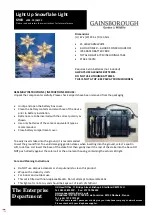
3.
Determine the location of the failed wells again as in step 1.
Position of failed wells
Action
Identical
The sample block is contaminated.
Decontaminate the sample block (see
Reversed
The plate is contaminated.
Discard the plate, then perform the calibration using a new
calibration plate.
4.
Use Smart Help if the calibration fails after you decontaminate the sample block and replace the
plate (see “Request technical support with Smart Help”
Create a background plate
(optional)
Whenever possible, use a background plate listed in “Required materials to prepare calibration plates”
. These plates contain a buffer that accurately simulates the reagents used for PCR, and,
therefore, produces high-quality calibration data.
If a background plate is not available, you can create one as described below.
Required materials:
• MicroAmp
™
optical 96-well reaction plate
• Optical adhesive cover or optical flat caps
• Pipettor, 200‐µL (with pipette tips)
• Powder‐free gloves
• Safety glasses
• Deionized water
IMPORTANT!
Wear powder-free gloves while creating the background plate.
1.
Remove a reaction plate from its box and place it on a clean, dry surface.
2.
Aliquot 50 µL of deionized water to each well of the reaction plate.
3.
Seal the plate using an optical adhesive cover or optical flat caps.
4.
Use the plate for background calibration.
Chapter 7
Calibrate and verify instrument performance
Perform ROI/uniformity, background, and dye calibrations for plate blocks
7
96
QuantStudio
™
6 Pro Real-Time PCR System and QuantStudio
™
7 Pro Real-Time PCR System User Guide
















































